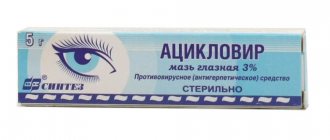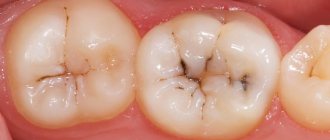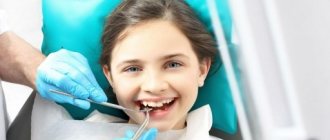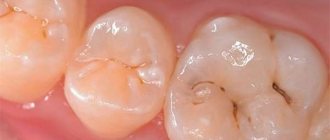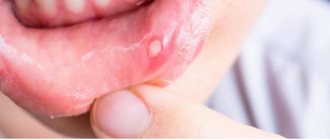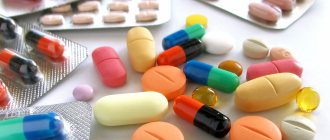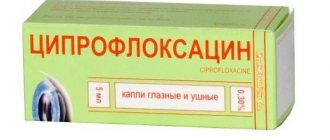Few people realize that an impressive number of modern diseases are caused by various microorganisms.
It is difficult to imagine modern medicine without antibacterial drugs - antibiotic drugs and artificial antimicrobial drugs.
Today, the question is considered relevant: is Tsiprolet, in demand in the treatment of all kinds of infectious diseases, an antibiotic or not? The answer can be found in this article.
What is hidden behind the definition of “antibiotics”?
They have been known since the beginning of the last century, when Penicillin was first discovered and quite successfully used in practice.
It was from that very moment that the entire vast industry for the production of antibiotic drugs began to develop.
Around the mid-twentieth century, synthetic antimicrobial drugs in the quinolone category were created. In addition to a high degree of effectiveness, they had a large number of side effects.
A little later, around the mid-eighties of the last century, fluorine was added to the drug formula to reduce the large number of undesirable effects from their use and increase the range of effects. This is how fluoroquinolones were obtained, to which Tsiprolet is classified.
Drug Tsiprolet 500
It is important to be able to distinguish between such different concepts as antibiotics and antibacterial compounds. The latter is a generalized name for a group of medications that have antimicrobial activity, which also includes antibiotics and antimicrobial drugs.
But as for substances that inhibit the growth of living organisms, they are exclusively of natural origin (like the well-known Penicillin). Drugs that are used to fight microbes are synthesized artificially from certain compounds and have no analogues in nature (for example, fluoroquinolones).
Features of the drug's action
It belongs to the second generation fluoroquinolones. It also has a number of specific qualities that make it possible to use it for a large number of infectious diseases of various types.
Tsiprolet has the following pharmacological characteristics:
- has a powerful bactericidal effect and blocks DNA synthesis of many microorganisms. This mechanism of action can be called unique, since bacteria are completely deprived of the ability to develop resistance to it. Resistance to fluoroquinolones is extremely rare;
- the active ingredient of the drug has a strong effect on a large number of gram-positive and gram-negative bacteria, as well as on intracellular pathogens;
- a few hours after administration, the first positive changes in the body’s condition can be noted. The highest concentrations of the drug are observed approximately one and a half hours after its ingestion. It is completely eliminated in exactly six hours;
- the content of the active ingredient of this medicine, which is necessary to eliminate all pathogenic bacteria that have entered the body, is maintained for twelve hours. It is for this reason that it is recommended to use it twice a day;
- unlike other antibiotics, this drug does not provoke the occurrence of diseases such as intestinal or vaginal dysbiosis;
- has increased effectiveness against certain infections, the pathogens of which are resistant to other bacterial drugs.
Tsiprolet 500 – an antibiotic or not? Since the drug is not an antibiotic, its use should be taken seriously. It is important to note that only the attending physician can prescribe it.
Tsiprolet for acne
Antibiotics for acne on the face are complex products that eliminate unwanted skin formations in the form of acne or ulcers.
Anyone can face skin problems, and you need to know how to protect yourself and reduce the risk of developing acne. How to choose antibiotics for acne? Which are the most effective? What can be recommended to the patient?
Modern medicine offers the patient dozens of remedies that guarantee a quick recovery. You must understand that each ointment has its own contraindications and side effects. Before you start using such products, you should seek help from a doctor.
Many patients begin to take increased dosages of multivitamins, others take a lot of walks outside, but the procedures always give the expected result.
There are 2 options for taking these drugs - externally and internally. Antibiotics for acne intended for oral administration can only be prescribed by your doctor. One of the most famous and effective remedies is streptocide.
It is intended for the treatment of unwanted formations on the face in the form of pimples and acne. Simply crush the tablet and mix with a small amount of water.
The resulting mixture should be applied to the affected area using a cotton swab.
Everyone knows the drug furatsilin. To this day, it is used in the treatment of lichen and herpes. This antibiotic is very aggressive, but helps get rid of many skin lesions in a few days. It has a number of disadvantages that are important to know:
- Furacilin destroys not only pathogenic bacteria, but also beneficial ones. The face becomes pale and the skin tightens.
- It is difficult to wash off from the skin.
- It may not be prescribed to all patients, as it has a number of features.
This antibiotic for acne can not only cure the problem, but also aggravate the situation.
Among other drugs that can be bought without a prescription, ampicillin deserves special attention. It is one of the most effective. Unlike other drugs, it has strong antimicrobial properties that help eliminate skin rashes not only on the face, but throughout the body.
It can be used in the same way as all of the above remedies. First, everything is crushed, filled with water and applied to the wound. It is advisable to use antibiotics for acne topically.
Doctors can prescribe salicylic-zinc paste, which has many positive reviews. The presented mixture helps the body fight acne, pimples and other inflammations. It can cause increased oily skin, so dosages should be kept moderate.
Antibiotics for acne of the tetracycline series can be added to various ointments and creams against acne and blackheads. What effect can doxycycline/tetracycline have:
- Complete cleansing of the skin from acne in a short period of time. The average period is 2-2.5 weeks.
- It has a strong effect on fungal diseases, as well as viruses caused by staphylococcus.
- Provides disinfection of the skin and the entire body. If you take the drug in tablet form, it can kill staphylococcus bacilli and Pseudomonas aeruginosa.
Treatment of acne and acne is carried out in courses and may include not only antibiotic ointment, scrubs and creams, but also antibiotics for acne, which must be taken orally.
This point must be considered carefully, since after completely stopping the drug, the skin rash may reappear.
There are many professional products on the market that can be used to treat acne.
For example, baziron or zenerite. They contain erythromycin, which provides such effectiveness.
The advantages of these funds can be highlighted:
- The medicinal substance included in the composition does not cause allergic manifestations or minimizes them.
- Easy to apply.
- This drug can be combined with taking pills.
- The cream can be used by pregnant women, women over 30 years of age and nursing mothers.
Metrogil guarantees a high degree of disinfection. It can be applied to the skin in a thin layer, but only to the affected areas.
All patients should be wary of allergic reactions that may occur during treatment.
It is better to apply ointment/cream or tablets locally to the affected areas, and the risk of getting a burn is reduced almost several times. If no effect is observed within 2 weeks, then you need to change the product. When taking antibiotic drugs internally, you must be especially careful, since the intestinal microflora is disrupted and the body's immune defense is reduced.
Before use, you should consult a dermatologist, who, during the examination, will be able to determine the cause and prescribe comprehensive treatment. Self-medication and self-diagnosis can only worsen the current skin condition. Be carefull!
source
You've got something wrong! If it is a fungal disease, then antibiotics are generally contraindicated. But pimples (acne), fortunately, have nothing to do with fungus. And they are not an infection. No need to take antibiotics - just immunity
plant!
The fact is that acne (pimples, blackheads, comedones), any
"configurations", most often, are streptococcal
inflammation (transition of saprophytic streptococcus, living in symbiosis with humans, into a parasitic form - due to any metabolic changes) and, possibly, activation of saprophytic facial
microscopic Demodex . Even if the tick
was not formally found - it does not matter (the mite exists in almost all people, but it is not always found when scraping!) Ointments and creams for this disease are usually poorly tolerated... Ready-made products (zenerit, skinoren, baziron, curiosin, etc. .) are also, as a rule, ineffective. Cosmetology
procedures may even worsen the further course. There is no need to take anything internally for acne - because
that there is no infection! Under no circumstances should you squeeze pimples (this increases irritation, can cause an abscess, and causes scars)! Demodex mites and streptococcus exist in the skin of almost all people - these are its NORMAL saprophytic inhabitants. And until something provokes them to enter the parasitic stage, we do not notice their presence. They are not a disease - they are the NORM. Therefore, the body will not allow you to fight them with antibiotics and antiparasitic drugs inside - it will turn on immune defense to SAVE these inflammatory agents! Try the following (this treatment regimen was developed by me and has been successfully used for more than 20 years): purchase 2 bottles at the pharmacy (each
40 ml) 2% salicylic alcohol, a package of ampoules of 1% Dioxidin solution (10.0 amps), a bottle of Dimexide and a package of Metronidazole tablets. Open all ampoules
dioxidine, mix it with the entire volume of lard. alcohol, add 1 table. a spoonful of dimexide and 4 table. spoons of boiled water. Then crush 3 metronidazole tablets, add to the solution and shake until completely dissolved. To prevent drying, add 1 bottle (25 ml)
Glycerol.
Wipe 2 times a day (at least six months). By the way, this can also help with other skin inflammations. Shake before use. And you need to wash your face not with tap water, but with bottled mineral water (only natural, not artificially mineralized) - contained in
Its sulfates additionally treat the skin and reduce oiliness...
If you have any additional questions, please write to [email protected]
consultations by email mail, individual production of medicinal ointments and lotions
tel.
mob.
(call from 9.00 to 11.00 in the morning and from 18.00 to 20.00 in the evening
Website for reviews: https://prodoctorov.ru/moskva/vrach/130209-chernyavskiy/#otzivi
PANIGRIBKO SERGEY LEONIDOVYCH
home consultations in Kovrov
tel:
(8) ; (8)905 614 88 12
In private messages (paid)
e-mail: [email protected] (paid)
skype: oktan-251 (paid)
Attention, I do not answer questions How to treat (write a prescription, prescribe treatment, etc.) Prescribing treatment in absentia can harm the patient and is legally illegal. What is this? Make a diagnosis from a photograph Only psychics, of which I am not one, can make a diagnosis from photographs.
In some cases, a high-quality photo can only suggest a diagnosis, which must be confirmed (clarified) at an in-person appointment with a doctor. I do not answer questions asked in personal messages. In exceptional cases, correspondence on a paid basis is possible. Reception in
Rostov-on-Don
344023, Rostov-on-Don, Lenin Ave., 251 Directions tel. +7,
My sites
Dermatologist-venereologist in Rostov-on-Don www.agapovmd.ru
Information about sexually transmitted infections www.venuro.ru Forum sexually transmitted and skin diseases www.venderm.ru
Information about ureaplasma and mycoplasma www.ureaplasma.info
But you are an unauthorized user.
If you have registered previously, then “log in” (login form in the upper right part of the site). If this is your first time here, please register.
If you register, you will be able to further track responses to your messages and continue the dialogue on interesting topics with other users and consultants. In addition, registration will allow you to conduct private correspondence with consultants and other users of the site.
source
Despite the fact that medicine is constantly moving forward, and almost every day more and more new methods of treating inflammation of the prostate gland are invented, antibiotics remain the No. 1 drug for this disease.
- Doxycycline for prostatitis: how does it work?
- Indications for use
- Disadvantages of antibiotics for prostatitis
- Instructions for use of Doxycycline
- Side effects and contraindications
- Conclusion
This is related to the cause of the disease. In 90% of all cases it is a bacterial infection. To successfully combat pathogenic microflora, Doxycycline is often prescribed for prostatitis. Especially if the pathogen is gram-positive coccus, chlamydia or ureaplasma.
The antibiotic belongs to the group of semi-synthetic tetracyclines. It has a bacteriostatic effect on a large number of microorganisms. Penetrating inside the microbial cell, it penetrates the DNA or RNA of the pathogen and damages the protein synthesis mechanism.
IT IS IMPORTANT TO KNOW! If you need powerful protection against prostatitis, experts recommend a natural remedy... Read more >>
Ultimately, the foreign antigen simply stops producing its toxins and is eliminated by natural immune defense mechanisms.
Doxycycline is especially effective for prostatitis, since the medicine easily penetrates the parenchyma of the gland. Already 45 minutes after introduction into the body, it can be detected in the prostate.
The peak of maximum activity occurs after 2 hours and lasts approximately 10-12 hours. The antibiotic is 95% absorbed into the cavity of the small intestine and almost all is excreted in the feces.
The use of such a medication must be agreed with the attending physician. This is due to the need to establish the sensitivity of pathogenic microflora to a specific antibacterial agent. Treatment of prostatitis with Doxycycline begins after identification of the pathogen.
However, you cannot simply interrupt the course of using the drug when the first improvements in the patient’s condition occur. This approach can provoke the emergence of antibiotic resistance in microbes and the development of further complications.
With the correct dosage regimen, when an adequate dosage of the medicine is selected, from the first days the patient will be able to note the following results:
- Decrease in temperature. Relevant for acute attacks of prostatitis with high bacteremia.
- Reducing the focus of inflammation. It manifests itself as regression of swelling and pain, which are caused by mechanical and chemical damage to peripheral nerve endings.
- Normalization of the act of urination. Pain disappears during the process itself and further spread of microorganisms throughout the body is prevented.
- Restoration of sexual function. Although Doxycycline for prostatitis has little effect on the vessels of the prostate gland and does not have a direct effect on erection, it kills the pathogen, eliminating the very root cause of the male problem.
- Improvement in general condition.
Source: https://club-sante.ru/tsiprolet/tsiprolet-pri-ugrevoy-sypi/
Indications for use
It is prescribed by the attending physician to the patient if the causative agent of a particular infection is hypersensitive to it, as well as as empirical monotherapy. The practical form of release in the form of tablets and suspension for injection makes it possible to use it in a medical facility and for treatment at home.
It is highly effective against infectious diseases such as:
- bronchitis, tracheitis and pneumonia;
- diseases of the urinary system;
- sinusitis, sore throat;
- cholangitis, cholecystitis;
- ailments associated with infections in joints and bones;
- diseases that affect the skin.
It is prescribed in the form of injections for dangerous forms of various infectious diseases.
In ophthalmic practice, Tsiprolet is used as eye drops. It is prescribed for certain inflammatory ailments associated with the eyeballs, as well as for preparation for future surgery.
Contraindications
It should not be used if there is hypersensitivity to individual components of this drug.
The list of contraindications includes: pregnancy, breastfeeding, childhood and adolescence.
It should also be used with special caution by sick elderly people, as well as people suffering from epilepsy and seizures, heart and vascular diseases, and brain damage due to the threat of side effects from the central nervous system.
During treatment with the drug, proper hydration is necessary to prevent possible crystalluria.
Directions for use and dosage
This tablet drug should be taken only orally, and in no case should it be chewed in the mouth. Each tablet should be washed down well with purified water. It can be drunk regardless of food intake. Using it on an empty stomach guarantees the greatest effectiveness, since the active substance is better absorbed this way.
The instructions for use accompanying the antibiotic Tsiprolet indicate the following approximate dosages:
- for uncomplicated infections of the genitourinary system, approximately 90 mg is used twice a day;
- for complicated infectious diseases (depending on the severity) - 190 mg twice a day;
- other diseases - 250-390 mg twice a day;
- acute gonorrhea and uncomplicated cystitis - a single dose of 180 mg intravenously;
- for infectious diseases of the urinary tract, including acute uncomplicated gonorrhea, this drug is recommended to be administered intravenously at 90 mg twice a day;
- for diseases of the respiratory tract that were caused by various microorganisms, you need to administer it 400 mg twice a day;
- for other infections - 150-350 mg twice a day.
Depending on the severity of the disease, the option of taking the tablet form of the drug orally should be considered.
It is advisable not to interrupt treatment for three days after the body temperature has normalized or all pronounced signs have completely disappeared. The course of treatment with this drug is approximately two weeks.
Tsiprolet® A (Ciprolet A)
Latest update of the description by the manufacturer 28.08.2014
Tinidazole + Ciprofloxacin* (Tinidazole + Ciprofloxacin*) J01R Antimicrobial drugs in combination
| Film-coated tablets | 1 table |
| active substances: | |
| ciprofloxacin hydrochloride monohydrate | 582.285 mg |
| (equivalent to 500 mg ciprofloxacin) | |
| tinidazole | 600 mg |
| excipients: corn starch - 35 mg; croscarmellose sodium - 27.476 mg; MCC - 5 mg; sodium carboxymethyl starch (type A) - 5 mg; colloidal silicon dioxide - 3.952 mg; talc - 8.952 mg; magnesium stearate – 7 mg | |
| film shell: hypromellose (6 cps) - 21.21 mg; sorbic acid - 0.2095 mg; titanium dioxide - 1 mg; talc - 4.01 mg; macrogol 6000 - 4.01 mg; polysorbate 80 - 0.2095 mg; dimethicone - 0.295 mg; dye “Sunset” yellow (E110) - 9.047 mg |
Pills:
oval in shape, covered with a film shell of light orange or orange color, with numerous small inclusions of a darker color, with a dividing line on one side and smooth on the other.
Pharmacological action - antiprotozoal, antimicrobial.
A combined drug whose effect is determined by the components included in its composition.
Tinidazole
- antiprotozoal and antimicrobial agent, imidazole derivative, effective against
Trichomonas vaginalis
,
Entamoeba histolytica
,
Lamblia,
as well as pathogens of anaerobic infections (
Clostridium spp.
, Bacteroides fragilis
,
Bacteroides melaninogenicus
,
Eubacter spp.
,
Fusobacterium spp.
,
Peptococcus spp.
and
Peptostreptococcus spp.
).
Being a highly lipophilic drug, it penetrates into Trichomonas and anaerobic microorganisms, where it is reduced by nitroreductase, inhibits synthesis and damages the DNA structure.
Ciprofloxacin
— a broad-spectrum antimicrobial agent, a fluoroquinolone derivative, suppresses bacterial DNA gyrase (topoisomerases II and IV, responsible for the process of supercoiling of chromosomal DNA around nuclear RNA, which is necessary for reading genetic information), disrupts DNA synthesis, growth and division of bacteria; causes pronounced morphological changes (including cell wall and membranes) and rapid death of the bacterial cell.
It has a bactericidal effect on gram-negative organisms during the period of rest and division (since it affects not only DNA gyrase, but also causes lysis of the cell wall), on gram-positive microorganisms - only during the period of division. Low toxicity for the cells of the macroorganism is explained by the absence of DNA gyrase in them.
While taking ciprofloxacin, there is no parallel development of resistance to other antibiotics that do not belong to the group of gyrase inhibitors, which makes it highly effective against bacteria resistant to aminoglycosides, penicillins, cephalosporins, tetracyclines and many other antibiotics.
Gram-negative aerobic bacteria are sensitive to ciprofloxacin: enterobacteriaceae ( Escherichia coli
,
Salmonella spp.
,
Shigella spp.
,
Citrobacter spp.
,
Klebsiella spp.
,
Enterobacter spp.
, Proteus mirabilis
,
Proteus vulgaris
,
Serratia marcescens
,
Hafnia alvei
,
Edwardsiella tarda
,
Providencia spp.
,
Morganella morganii
,
Vibrio spp.
,
Yersinia spp.
), other gram-negative bacteria (
Haemophilus spp.
, Pseudomonas aeruginosa
,
Moraxella catarrhalis
,
Aeromonas spp.
,
Pasteurella multocida
,
Plesiomonas shigelloides
,
Campylobacter jejuni
,
Neisseria spp.
), some intracellular pathogens (
Legionella pneumophila
,
Brucella spp.
, Listeria monocytogenes
,
Mycobacterium tuberculosis
,
Mycobacterium kansasii
);
gram-positive aerobic bacteria: Staphylococcus spp.
( Staphylococcus aureus
,
Staphylococcus haemolyticus
,
Staphylococcus hominis
,
Staphylococcus saprophyticus
),
Streptococcus spp.
(
Streptococcus pyogenes
,
Streptococcus agalactiae
).
Most staphylococci resistant to methicillin are also resistant to ciprofloxacin.
Resistance develops extremely slowly, since, on the one hand, after the action of ciprofloxacin there are practically no persistent microorganisms left, and on the other hand, bacterial cells do not have enzymes that inactivate it.
Resistant to the drug: Bacteroides fragilis
,
Pseudomonas cepacia
,
Pseudomonas maltophilia
,
Ureaplasma urealyticum
,
Clostridium difficile
,
Nocardia asteroides
.
Ineffective against Treponema pallidum
.
Suction
Both ciprofloxacin and tinidazole are well absorbed from the gastrointestinal tract after oral administration. Eating slows down absorption, but does not change the maximum concentration or bioavailability.
Distribution
Tinidazole.
Bioavailability - 100%, plasma protein binding - 12%, Tmax after oral administration - 2 hours, Cmax after oral administration of 500 mg - 47.7 mcg/ml.
Ciprofloxacin.
Bioavailability - 50-85%, Vd - 2-3.5 l/kg, plasma protein binding - 20-40%, Tmax after oral administration - 60-90 min, Cmax after oral administration 500 mg - 0.2 mcg/ ml.
Metabolism and excretion
Tinidazole
penetrates into the cerebrospinal fluid in a concentration equal to that in plasma and is reabsorbed in the renal tubules. T1/2 - 12-14 hours. Tinidazole is metabolized in the liver with the participation of the cytochrome P450 (CYP3A4) enzyme system. About 50% is excreted in bile, 25% in the kidneys, and 12% in the form of metabolites. It is reabsorbed in the renal tubules.
Ciprofloxacin
penetrates well into fluids and body tissues (excluding fat-rich tissue, such as nervous tissue). Concentrations in tissues are 2–12 times higher than in plasma.
Therapeutic concentrations are achieved in saliva, tonsils, liver, gall bladder, bile, intestines, abdominal and pelvic organs, uterus, seminal fluid, prostate tissue, endometrium, fallopian tubes and ovaries, kidneys and urinary organs, lung tissue, bronchial secretions, bone tissue, muscles, synovial fluid and articular cartilage, peritoneal fluid, skin. It penetrates into the cerebrospinal fluid in a small amount, where its concentration, in the absence of inflammation of the meninges, is 6–10% of the serum value, and with inflammation - 14–37%. Ciprofloxacin also penetrates well into the ocular fluid, bronchial secretions, pleura, peritoneum, lymph, and through the placenta. The concentration of ciprofloxacin in blood neutrophils is 2–7 times higher than in blood plasma. Activity decreases slightly at pH values less than 6. Metabolized in the liver (15–30%) with the formation of low-active metabolites (diethylciprofloxacin, sulfociprofloxacin, oxociprofloxacin, formylciprofloxacin). T1/2 - about 4 hours. It is excreted mainly by the kidneys by tubular filtration and tubular secretion in unchanged form (40-50%) and in the form of metabolites (15%), the rest - through the gastrointestinal tract. A small amount is excreted in breast milk. Renal Cl - 3–5 ml/min/kg; total Cl - 8–10 ml/min/kg.
In special cases
The pharmacokinetic parameters of tinidazole in patients with chronic renal failure (creatinine Cl above 22 ml/min) do not differ from those in healthy people.
For ciprofloxacin in chronic renal failure, T1/2 increases to 12 hours. In chronic renal failure (creatinine clearance above 20 ml/min), the percentage of the drug excreted through the kidneys decreases, but accumulation in the body does not occur due to a compensatory increase in the metabolism of the drug and its excretion through the gastrointestinal tract.
Mixed bacterial infections caused by sensitive gram-positive and gram-negative microorganisms, in association with anaerobic microorganisms and/or protozoa:
respiratory tract infections (acute and chronic (in the acute stage) bronchitis, pneumonia, bronchiectasis);
infections of the ENT organs (otitis media, sinusitis, frontal sinusitis, sinusitis, mastoiditis, tonsillitis, pharyngitis);
oral infections (acute ulcerative gingivitis, periodontitis, periostitis);
kidney and urinary tract infections (cystitis, pyelonephritis);
infections of the pelvic and genital organs (prostatitis, adnexitis, salpingitis, oophoritis, endometritis, tubular abscess, pelvioperitonitis);
intra-abdominal infections (infections of the gastrointestinal tract, biliary tract, intraperitoneal abscesses);
infections of the skin and soft tissues (infected ulcers, wounds, burns, abscesses, cellulitis, ulcerative skin lesions in diabetic foot syndrome, bedsores);
infections of bones and joints (osteomyelitis, septic arthritis);
postoperative infections.
hypersensitivity (including to fluoroquinolone or imidazole derivatives);
blood diseases (history);
inhibition of bone marrow hematopoiesis;
organic diseases of the central nervous system;
pregnancy;
lactation period;
simultaneous use with tizanidine (risk of a pronounced decrease in blood pressure, drowsiness);
acute porphyria;
children under 18 years of age.
Carefully:
severe cerebral atherosclerosis; cerebrovascular accident; mental illness; epilepsy; history of seizures; severe renal and/or liver failure; elderly age.
Since tinidazole and ciprofloxacin are excreted into breast milk, during treatment with the drug it is necessary to stop breastfeeding, since tinidazole can have a mutagenic and carcinogenic effect.
From the digestive system:
decreased appetite, dry oral mucosa, metallic taste in the mouth, nausea, vomiting, diarrhea, abdominal pain, flatulence, cholestatic jaundice (especially in patients with previous liver diseases), hepatitis, hepatonecrosis.
From the nervous system:
headache, dizziness, increased fatigue, impaired coordination of movements (incl.
locomotor ataxia), dysarthria, peripheral neuropathy; rarely - convulsions, weakness, anxiety, tremor, insomnia, nightmares, peripheral paralgesia (anomaly in the perception of pain), increased ICP, confusion, depression, hallucinations, as well as other manifestations of psychotic reactions, migraine, fainting, cerebral artery thrombosis, increased sweating.
From the senses:
disturbances of taste and smell, visual impairment (diplopia, changes in color vision), tinnitus, hearing loss.
From the SSS side:
tachycardia, arrhythmia, decreased blood pressure.
From the hematopoietic organs:
leukopenia, granulocytopenia, anemia (including hemolytic), thrombocytopenia, leukocytosis, thrombocytosis.
From the urinary system:
hematuria, crystalluria (with an alkaline reaction of urine and decreased diuresis), glomerulonephritis, dysuria, polyuria, urinary retention, albuminuria, decreased nitrogen excretory function of the kidneys, interstitial nephritis.
Allergic reactions:
skin itching, urticaria, skin rash, drug fever, petechiae, angioedema, shortness of breath, eosinophilia, photosensitivity, vasculitis, erythema nodosum, erythema multiforme exudative (including Stevens-Johnson syndrome), toxic epidermal necrolysis (Lyell's syndrome).
From the laboratory parameters:
hypoprothrombinemia, increased activity of liver transaminases and alkaline phosphatase, hypercreatininemia, hyperbilirubinemia, hyperglycemia.
Other:
arthralgia, arthritis, tendovaginitis, tendon ruptures, asthenia, myalgia, superinfections (candidiasis, pseudomembranous colitis), flushing.
Effects due to tinidazole.
Enhances the effect of indirect anticoagulants. To reduce the risk of bleeding, the dose of Tsiprolet®A is reduced by 50%. Enhances the effect of ethanol (disulfiram-like reactions). Phenobarbital accelerates the metabolism of tinidazole. The drug Tsiprolet® A is not recommended to be prescribed with ethionamide.
Effects due to ciprofloxacin.
Due to a decrease in the activity of microsomal oxidation processes in hepatocytes, it increases the concentration and lengthens T1/2 of theophylline and other xanthines, incl. caffeine, oral hypoglycemic drugs, indirect anticoagulants, helps reduce the prothrombin index.
It enhances the nephrotoxic effect of cyclosporine, there is an increase in serum creatinine; in such patients it is necessary to monitor this indicator 2 times a week. Oral administration together with iron-containing drugs, sucralfate and antacid drugs containing Mg2+, Ca2+, Al3+, didanosine leads to a decrease in the absorption of ciprofloxacin.
Therefore, the drug Ciprolet®A is prescribed 1–2 hours before or 4 hours after taking the above drugs. NSAIDs (excluding acetylsalicylic acid) increase the risk of seizures. Metoclopramide accelerates absorption, which leads to a decrease in Tmax. Co-administration of uricosuric drugs leads to a slower elimination (up to 50%) and an increase in plasma concentrations of ciprofloxacin.
Increases Cmax by 7 times (from 4 to 21 times) and AUC of tizanidine, which increases the risk of a pronounced decrease in blood pressure and drowsiness.
The drug Tsiprolet®A is compatible with sulfonamides and antibiotics (β-lactam antibiotics, aminoglycosides, erythromycin, rifampicin, cephalosporins), when combined with which synergism is usually observed.
Inside
, 1 hour before or 2 hours after meals, with plenty of water. Do not break, chew, or crush the tablet.
Recommended dose - 1 tablet. 2 times a day for 5–10 days.
Symptoms:
in cases of acute overdose, symptoms of reversible damage to the urinary system will prevail, and convulsions are possible.
Treatment:
induction of vomiting, gastric lavage. Symptomatic, supportive therapy (including adequate hydration of the body). There is no specific antidote. With the help of hemo- or peritoneal dialysis, tinidazole can be completely eliminated from the body, and ciprofloxacin - slightly (
Source: https://www.rlsnet.ru/tn_index_id_45582.htm
Side effects
In certain cases, the following undesirable reactions of the body are noted:
- tachycardia, migraine and fainting;
- nausea, vomiting, diarrhea, dysfunction of the gastrointestinal tract, unbearable pain in the abdomen, bloating, lack of appetite;
- dizziness, headache, insomnia, lack of sleep, sweating, lack of coordination, convulsions, persistent feelings of fear, nightmares at night, depression, hallucinations, visual disturbances and tinnitus;
- thrombocytopenia, extremely rarely - leukocytosis, thrombocytosis, hemolytic anemia;
- skin rashes, itching, anaphylactic shock, nephritis, hepatitis.
In case of particularly acute reactions of the body to the active substance of the drug, you should stop taking it. If you don't do this, you may face more dangerous and unforeseen consequences.
Side effects
Film-coated tablets and solution for infusion
- nervous system: headache, dizziness, fatigue, tremor, insomnia, anxiety, nightmares, peripheral paralysis, sweating, increased intracranial pressure, confusion, hallucinations, depression, other psychotic reactions (sometimes with the risk of patient harm), fainting , migraine, thrombosis of cerebral arteries;
- digestive system: abdominal pain, nausea, vomiting, diarrhea, flatulence, anorexia, hepatitis, cholestatic jaundice (more often with a history of liver disease), hepatonecrosis, increased activity of liver enzymes and alkaline phosphatase;
- sense organs: impaired sense of smell and taste, changes in color vision, diplopia, hearing loss, tinnitus;
- hematopoietic system: anemia, leukopenia, granulocytopenia, thrombocytopenia, leukocytosis, hemolytic anemia, thrombocytosis;
- cardiovascular system: decreased blood pressure (BP), heart rhythm disturbances, tachycardia, flushing of the facial skin;
- musculoskeletal system: arthritis, arthralgia, tendovaginitis, myalgia, tendon ruptures;
- urinary system: urinary retention, hematuria, crystalluria (more often with low diuresis and alkaline urine), glomerulonephritis, albuminuria, hematuria, dysuria, urethral bleeding, decreased nitrogen excretory function of the kidneys, polyuria, interstitial nephritis;
- laboratory parameters: hypercreatininemia, hyperbilirubinemia, hypoprothrombinemia, hyperglycemia;
- allergic reactions: itching, shortness of breath, urticaria, swelling of the face or larynx, drug fever, eosinophilia, petechiae, vasculitis, increased photosensitivity, erythema nodosum, Stevens-Johnson syndrome, exudative erythema multiforme, Lyell's syndrome, blistering accompanied by bleeding, formation of small nodules , forming scabs;
- other: superinfections (pseudomembranous colitis, candidiasis), general weakness.
In addition, during the use of the solution, local reactions may occur in the form of pain and burning at the injection site, phlebitis.
Eye drops
- organ of vision: mild pain, conjunctival hyperemia, itching, burning; rarely - photophobia, lacrimation, swelling of the eyelids, sensation of a foreign body in the eyes, decreased visual acuity, corneal infiltration, keratitis, keratopathy, in patients with a corneal ulcer - the appearance of a white crystalline precipitate;
- other: nausea, allergic reactions; rarely - development of superinfection, feeling of an unpleasant taste in the mouth immediately after instillation.
Tsiprolet is an antimicrobial drug
The question of this article was the following: is Tsiprolet an antibiotic?
This can be answered unequivocally - in the medical literature it is often called such, which is completely untrue.
Despite the fact that the drug has high antibacterial activity and is often used to treat various diseases of an infectious nature, it is not an antibiotic.
At the moment it is known that Tsiprolet has no analogues of natural origin. This is the main reason why it is incorrect to call it an antibiotic. To be more precise, Tsiprolet is a strong antimicrobial drug.
The price for the antibiotic Tsiprolet is 65-75 rubles, if we talk about 250 mg tablets, the cost for drops and solution for infusion is the same. But the price for the antibiotic Tsiprolet 500 is about 120-150 rubles.
You should not self-medicate and take it yourself, because it is prescribed only by your doctor. Otherwise, you may encounter unpleasant consequences that can lead to serious complications.
Release forms
The pharmaceutical industry has created many forms of drugs; such a wide choice is associated with solving a number of problems, including:
- ease of administration;
- painlessness;
- possibility of precise dosing of the drug;
- safety for humans.
In pharmacies in our country you will find Tsiprolet in the form of tablets, injection solution or in the form of eye drops. The tablet form of release is the most convenient, which explains the wide choice of dosages: 250 mg, 500 mg, 1000 mg (rarely). The leader in the production of this drug is Italy.
Solution for injection in dosage (based on the active substance) - 2 mg/ml. The drug is administered both intramuscularly and intravenously, but the latter option should only be performed in a hospital setting, as there is a high risk of developing allergic reactions. Despite the fact that the parenteral route of administration of the drug has a greater therapeutic effect, it should only be performed as prescribed by a doctor.
In pharmacies you can also find Tsiprolet in the form of eye drops, but they are in no way used to treat sinusitis. The use of such a drug intranasally is extremely dangerous for health, since there is a high risk of burns to the mucous membrane, as well as toxic shock, which is associated with the rapid death of a large number of bacteria. Eye drops should be used only for their intended purpose.
Remember that taking antibacterial agents should only be started after being prescribed by your doctor, as otherwise there are high risks to life and health!
